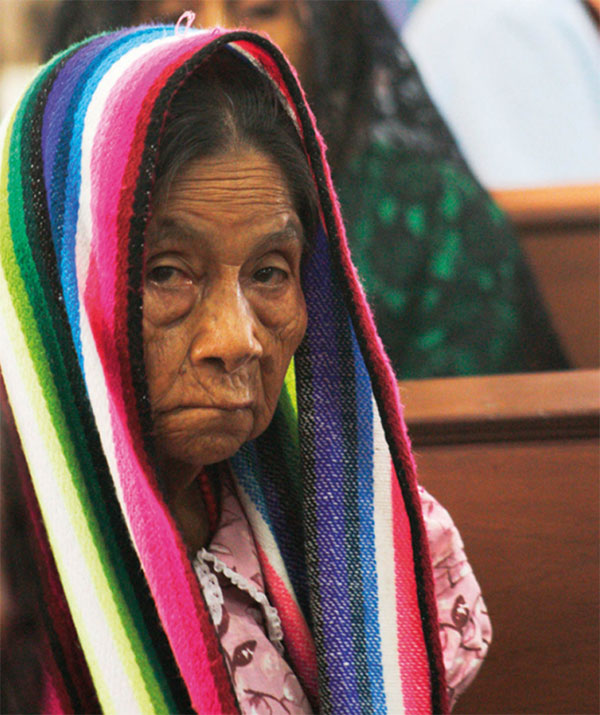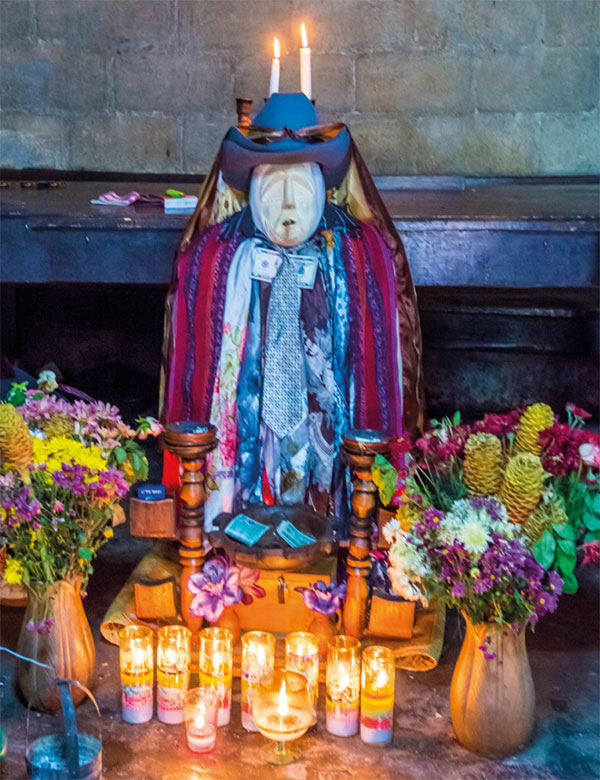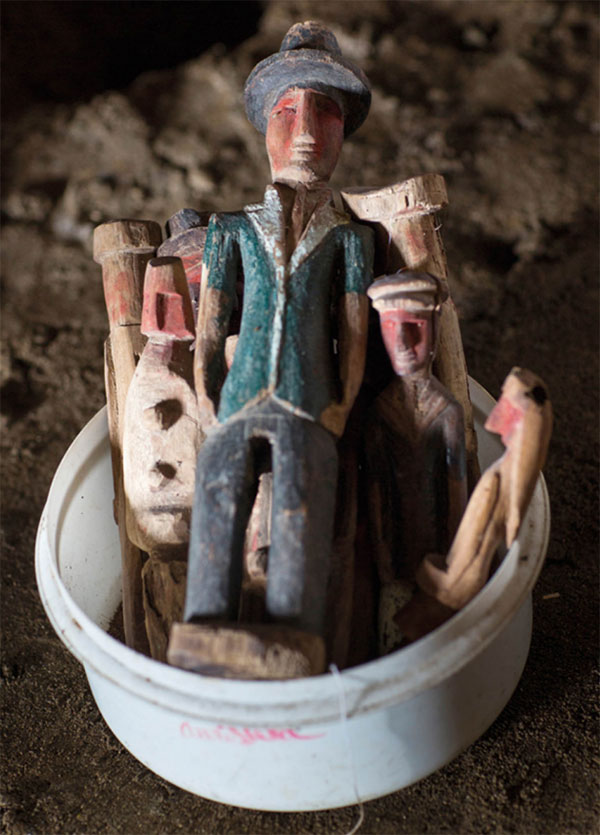RELIGION
From Indigenous beliefs and the Spanish push for Catholicism to the recent rise of Evangelicals, religion has helped shape Central America.
‘The first aim of your expedition is to serve God and spread the Christian faith,’ were the orders that the Spanish crown gave to conquistador Hernán Cortés on his expedition into Mexico to conquer the Aztecs. As Latin America came under Spanish control, wave after wave of Franciscan, Dominican, Augustinian, and Jesuit missionaries soon followed. Some reports claim that the Franciscans alone baptized as many as 5 million people in the first years of European settlement in the New World.
Conversion by the conquistadors
During the Age of Discovery, Spanish governors encouraged the spread of Catholicism among the native populations, which was supported by the Vatican and allowed them to control the region with only a small military. Missions and other colonies were established, and spreading Christianity to the newly discovered continent became a top priority, although just one piece of the wider Spanish colonization system.
Throughout the region, massive stone churches were built, as grand as any in Europe, and they anchored the towns and villages where the converts lived. Schools, trades, civil government, and hospitals were established there too. The church became the center of life in every village and city. Priests controlled books and education. Life revolved around the church bells, letting villagers know when it was time to wake up or eat. The Indigenous people were legally defined as children in some cases, leading the clergy to take on an almost paternalistic role, sometimes enforced with corporal punishment.
While there was fierce resistance among local populations, priests began fusing elements of native beliefs into Catholicism. ‘Folk Catholicism,’ as it is sometimes called, incorporated elements of local spirituality, legend, and shamanism into orthodox Catholic dogma, resulting in a fusion of Indigenous and Catholic beliefs that could resonate in local communities. In Guatemala, the Maya population adapted Catholicism to their traditional cosmovision, while in other places Indigenous gods were simply swapped with Catholic saints and virgins. Costa Rica, the most European of the Central American nations, created the Virgin de los Angeles or La Negrita – a small, black, stone image – which became Costa Rica’s patron saint in 1824. Early attempts were made to prepare Indigenous clergy, but many in the church were suspicious, seeing them as not entirely dependable. Some monastic orders specifically forbade the ordination of non-Spanish priests.

Salvadoran woman at Mass.
The influence of Catholicism
The influence of Catholicism allowed Spain’s other objectives to be reached, such as the extension of Spanish language, culture, and political control in the New World. However, this proved to be a double-edged sword. Central America became so fervently Catholic that when Spain tried to assert control of the church, the clergy became politically active and helped initiate calls for independence. In the 1960s, growing social awareness and politicization of the Church gave birth to liberation theology that openly supported anti-imperialist movements.

Shrine of El Maximon in Santiago de Atitlan, Guatemala.
Still, in the near-five centuries after the Conquest, the Church hierarchy made little effort to reach out to the Indigenous groups in Central America – there were few attempts to translate the Bible into the Indigenous languages, and the liturgy was remote and often inexplicable to the local population. During the turbulent years from the 1950s onward, the Catholic Church hierarchy largely sided with the armed forces and with repression, and consequently was viewed with increasing suspicion as violence in many Central American countries increased.
In spite of this growing tension in places like Guatemala, many rural Catholic priests had made efforts to win over Maya communities, supporting development projects and campesinos’ unions. Unfortunately, these activities provoked the suspicions of the military authorities, who labeled the priests as communists and troublemakers. Paramilitary death squads hunted down and brutally murdered many of these campaigning Catholic priests, to such an extent that by the early 1980s the Catholic Church had withdrawn altogether from some of the guerrilla-based areas of the highlands, by way of protest and for its own self-preservation. The vacuum thus created by the Catholic Church left many highland Maya wary and fearful of being associated with the guerrilla movement.
In Panama City, one of the world’s eight Baha’i Houses of Worship can be found. This monotheistic religion, which emphasizes the spiritual unity of all humankind, was founded in Persia in the 19th century and arrived in Panama in the 1940s. It currently has about 60,000 members in the country, including around 10 percent of all Ngäbe people.
Evangelists
Evangelical missionaries from the United States adopted a very different approach in Central America to their Catholic counterparts. They lived in the Indigenous communities, and from the start learned and translated the Bible into the local tongues. They also taught converts a way of life that was strict but appealing, forbidding alcohol and openly condemning social behavior they saw as sinful, whereas the Catholic Church had remained aloof on these matters. Significantly, some Evangelists openly voiced their support for the army over the guerrillas, a policy which gained acceptance from those keen to survive further military oppression.
They also attracted many converts because of their promise that by leading a ‘proper’ Christian life, the faithful would advance in their lives on this earth as well as in the next world. This Evangelical message was extremely seductive for many Indigenous peoples who felt they had been excluded from all levels of society. As a result, by the start of World War II, Central American Evangelical churches had become a powerful force around the region, something that was accelerated by mass migrations to cities; their influence continues to grow today.
Other Christian sects
While the region remains overwhelmingly Catholic – Latin America has more than 425 million faithfuls, accounting for about 40 percent of the world’s total Catholic population – the movement toward Protestantism has gained significant momentum in the span of a single lifetime. The numbers are quickly changing. In 1938 Protestants totaled about 600,000 in Latin America, but a decade later there were close to 3 million. Over the last two decades the numbers have exploded and are continuing to grow. There are now estimated to be over 40 million Protestants in the region. In Guatemala, for example, Evangelists currently make up around 41 percent of the population, and in El Salvador, it’s 44 percent. Dozens of sects of Christianity have made in-roads in the region, including Seventh-day Adventists, Jehovah’s Witnesses, and Episcopalians, although they still only make up small segments of the population.
In Belize, La Mosquitia, and the Bay Islands – places settled by or aligned with the British – the Anglican Church once battled with the Roman Catholic church for converts, but today there are just an estimated 35,000 members in the entire region. Additionally, there are small communities of Mennonites in Belize, whose fascinating culture originated in the Netherlands in the 16th century (for more information, click here) For the past 50 years they have made a tremendous contribution to the agricultural sector. In the 1950s, Quakers from the US came to Costa Rica looking for peace. They found it in the cloud forest of Monteverde, where they formed a community dedicated to a life of harmony with the land. They have created a successful dairy and cheese industry, which today supplies much of Costa Rica’s specialty cheese market.
Animistic traditions
Despite the influence of Christianity, many of the more remote Indigenous groups still cling to their animistic religious traditions. The Bribri in Costa Rica, for example, call their deity Sibu and put their trust in shamans, with their vast knowledge of the rainforest’s medicinal herbs, to cure a range of illnesses. The Garífuna believe that the departed ancestors mediate between the individual and the external world, though their religion combines elements of Catholicism as well. In Panama, the Kuna religion is called the ‘Father’s Way,’ and has a creation myth that references Pab Dummat (Big Father) and Nan Dummat (Big Mother). They hold regular church-like services where caciques (chiefs) chant religious and historical songs full of symbolism.

Wood statues used by Kuna shaman in Panama.